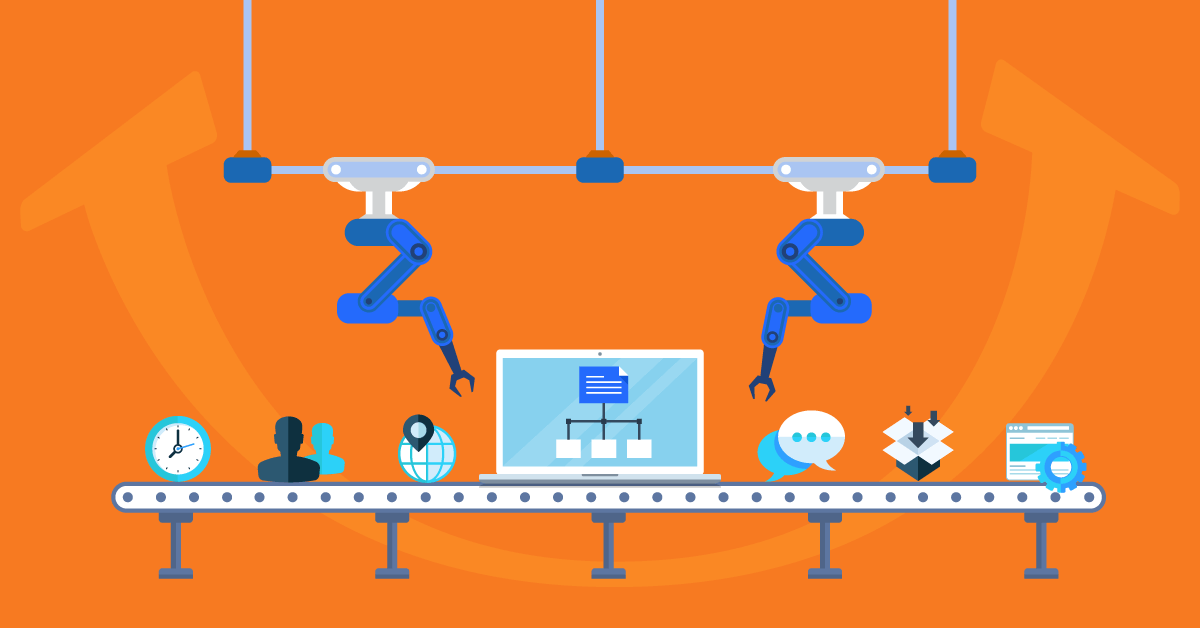Your business can’t afford to stand still, and neither can your training. By providing ongoing training for employees you’re investing in a mentality that’s the opposite to the “train once, tick the box, move on” that’s often applied in (mainly unsuccessful) businesses.
But what does it actually look like? Well, an ongoing training program consists of several formal learning activities, like courses, and as well as informal opportunities for learning like job shadowing and mentorship.
Why ongoing training matters
Sure, this might sound like a heavy investment. But ongoing training opportunities lead to happy, challenged, and loyal employees – the kind of employees who choose to stick around. This reduces the turnover that costs businesses millions annually.
Let’s explore why it’s essential to invest in ongoing training and help your employees and business bloom.
Just a single training session has amazing benefits for your employees. So, imagine what continuous training, upskilling/reskilling can do for your teams. Ongoing training for employees can assist in reducing skills gaps, structuring L&D, boosting employee productivity and motivation. Also, when your teams obtain regular training it results in your organization being up-to-date with competition and thus, succeed as a whole.
Other benefits of ongoing training for employees include:
- Employees stay ahead of industry changes through constant skills development
- Staff is more likely to feel satisfied, knowledgeable, empowered, and supported
- Mid-level and senior roles can be filled with internal hires due to constant upskilling
- Employees become lifelong learners who can keep pace with the skills churn
But ongoing training for employees is most valuable when it’s done right, using training best practices that create engaged learners who retain new skills and knowledge. So let’s look at a few ways to improve your ongoing training program.
Pro tips to improve ongoing training for your employees
It’s pretty obvious that no business can afford not to invest in ongoing training for employees. The real question is: what do you do if your current ongoing training program isn’t delivering the goods?
1. Make learning more flexible and accessible
You’ve heard it before, and you’ve experienced it yourself: employees are busier than ever. Making time for training is difficult when they’re balancing so many demands on their time and attention.
Fortunately, digital delivery tools like a powerful Learning Management System (LMS) have become a viable and easy-to-use option. By choosing an LMS with an intuitive user-interface, you’ll save learners from frustration and confusion when using the platform. A top-notch LMS will allow you to create course content that’s easy to access and navigate.
But eLearning also offers convenience. Ongoing training for employees on an LMS with mobile compatibility means that learners can access materials on their commute, waiting in line at the bank, or any other “wasted” time. And by applying microlearning principles, short, sharp chunks of content (like infographics, checklists, or gifs) become even easier for learners to consume on-the-go.
Looking for an eLearning platform to create online training courses?
Simplify and amplify training in no time with TalentLMS.
The training platform that users consistently rank #1.
2. Gamify learning to boost engagement
Everyone loves a bit of play to decompress. After all, we’re all kids at heart. The best way to keep your employees engaged and promote an ongoing training culture among your organization is to make use of gamification options for learning.
Gamified learning sessions can bring amazing results to your staff’s development. Why not incorporating them into your ongoing training strategy to keep your employees in the learning zone for an extended period of time?
When learning becomes play it’s no longer a chore they have to complete and get on with their day. Instead, it becomes part of their routine, they can share badges or comment on their progress, it promotes healthy competition, and enhances team bonding.
3. Motivate your managers to get involved
Managers know all about the skills their team needs now, and probably even the skills they’ll need in the future. Even more importantly, managers are in contact with employees on a daily basis and can monitor their performance both before and after training.
Ignoring the manager’s role in ongoing training for employees could cost you the opportunity to understand learners better, but also to provide them with a valuable source of ongoing support and encouragement. That’s why managers should function as coaches during the training process, helping learners apply new skills and knowledge and achieve real behavioral change.
And in remote settings, managers should be actively participating in employee L&D by scheduling regular check-ins, remote mentoring and feedback sessions. An LMS with integrated videoconferencing tools makes this approach feasible and easy even for your remote teams.
A few tried and tested tactics to involve managers in your ongoing training program include:
- Meeting with managers as part of the needs analysis phase of training design
- Linking manager remuneration and rewards to training performance and ROI
- Providing a system for managers to request job aids for just-in-time learning and short instructional interventions as needed
4. Use tools that serve remote workers and in-office teams
The modern-day dispersed work environment demands training that’s designed to serve both in-office and remote learners. Achieving this can be challenging without a quality LMS for ongoing training for employees.
While in-office employees can attend face-to-face training sessions, their time is often better spent accessing training content at their own pace. But as convenient as microlearning and mobile accessibility can be, you also need to consider the support, encouragement, and mentorship aspects of training. These are especially important to remote employees who may experience isolation in their work and training.
Prevent isolation by using webinars instead of in-person workshops, and setting up discussion forums on your LMS so that learners can share their opinions and experiences. Provide remote employees with an equal opportunity for mentorship by organizing one-on-one sessions with managers or mentors.
5. Match different learning options and preferences
One of the worst mistakes in planning an ongoing training program is to assume that all learners have the same learning preferences.
To start with, today’s workforce spans five generations – all of whom have different levels of comfort with technology. This means that while Millennials and Generation Z might immediately understand how to navigate a sophisticated mobile learning platform, your flashiest efforts at modern training may just leave your older audience behind.
And technology is far from the only factor that separates learners’ preferences. Some learners simply find themselves overwhelmed by large amounts of text, or too much video content. Your best bet for satisfying a variety of learning preferences is to design content that combines text, graphic, and video elements. Then, add simple exercises that offer quick wins, prepare the learner for larger activities.
Another great tool you can use in your ongoing training strategy is to give access to employees to an online training course library. They will be able to continue with their training at their own pace and discover new skills they need to work on as they are given enough freedom to browse through a collection of courses. For instance, they might have a more relaxed day at work free of tasks, so it would be great to have the opportunity to go in the online training course library, find a couple of courses they feel would benefit from and enhance their development just like that!
Meet TalentLibrary™
A growing collection of ready-made video courses that cover the skills
your teams need for success at work
![]()

6. Offer cross-department training
Ongoing training can be a great opportunity to develop employees’ understanding of other roles and departments. This builds empathy and team spirit between departments that are working towards shared goals, and who may even have a thing or two to teach each other.
Cross-department training might sound tricky to apply, but it can be achieved as easily as offering combined workshops. Or, organize collaborative online opportunities, like scenarios, where employees with different skill sets need to work together to solve a problem. At the same time, encourage group projects so that people can learn from each other while on duty. What’s better than some on-the-job training (even if your employees work from home) that sharpens skills and boosts the creation of stronger bonds within staff members?
Some of the benefits of cross-department training include:
- Avoiding silos and knowledge-hoarding within the organization
- Broadening employee skill sets for improved collaboration
- Improving “skills security” in the organization and avoiding skills gaps (if a particular employee leaves or is unavailable, there are other employees available with overlapping skill sets)
- Improved productivity due to better communication between departments
7. Ask employees what they want
When designing ongoing training for employees, keep in mind that the modern-day employee is usually aware of the skills they’re likely to need in the future. This is because the skills landscape across industries is changing rapidly – and employees are aware of how vulnerable these evolving needs could make them.
So, just like you can’t overlook the need for input from managers, don’t underestimate the power of simply asking employees what they want to learn. There are two important tools to consider if you want honest and accurate input from employees about their skills needs:
1. Set goals on a regular basis: Setting learning and development goals should become a regular part of performance management. For example, if each employee sits down with their manager once a month, use the opportunity to discuss where the employee thinks their skills could be improved, and how.
2. Create simple feedback channels: Employees are more likely to give honest feedback about the ongoing training they’ve received, and where they feel their development needs aren’t being met if they’re given a convenient and private channel to do so. Making liberal use of surveys during and after training (consider making some anonymous) is a step in the right direction.
An added benefit of asking employees what they want to learn is that they’ll be more motivated to participate if they feel heard and empowered in their own development journey.

Improve ongoing training for employees with the best tools available
Ongoing training promises many benefits, but unlocking these benefits means following the six proven tips discussed here. A user-friendly LMS that offers tailorable design, content, and delivery options is an invaluable tool for putting these tips into action.
Originally published on: 18 May 2018 | Tags: Employee Training,Ongoing Training



